When your pup starts looking more like a loaf of bread than a lively ball of energy, it’s time to rethink their diet. We love spoiling our dogs with treats and extra servings.
Those puppy eyes can be hard to resist! But extra weight can cause serious health issues. I learned this the hard way when my dog, Max, began panting after just two steps.
That’s when I saw his “chunky charm” was actually a warning sign.
Finding the best dog food to help your pup lose weight isn’t just about cutting calories; it’s about smarter feeding.
So, grab a cup of coffee, sit back, and let’s explore how to help your furry friend shed those extra pounds while still wagging that tail with joy.
Why Weight Loss Matters for Your Dog
Before we get into brands and bag labels, let’s face a simple truth: an overweight dog is not a happy dog.
Extra weight puts pressure on joints, slows them down, and increases the risk of heart disease, diabetes, and even shortened lifespan. And that’s not the kind of “extra” we want.
A healthy weight helps your dog stay active, playful, and comfortable. Ever noticed how your pup seems more alert and energetic after shedding a few pounds?
That’s because less weight means less strain on their body and better mobility. Think of it like switching from running with a backpack to running without one. Which would you prefer?
Signs Your Dog Might Be Overweight
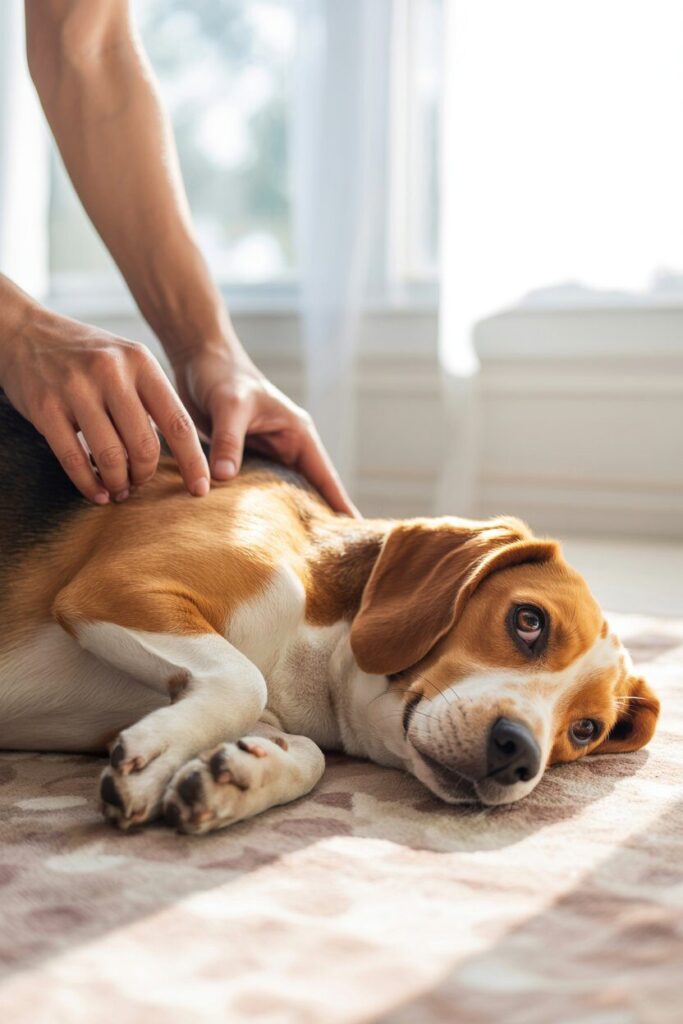
You don’t need a vet degree to spot a chunky pup. Here’s how to tell if your dog could use a dietary intervention:
- Ribs are hard to feel under the fat.
- Waistline disappears or looks more like a barrel.
- Low energy levels and shortness of breath during play.
- Lethargy or reluctance to move after short activity.
If that sounds familiar, don’t worry. You’re not a bad pet parent; you’re just human. The good news is that dogs respond incredibly well to balanced nutrition and portion control.
What to Look for in a Weight Loss Dog Food
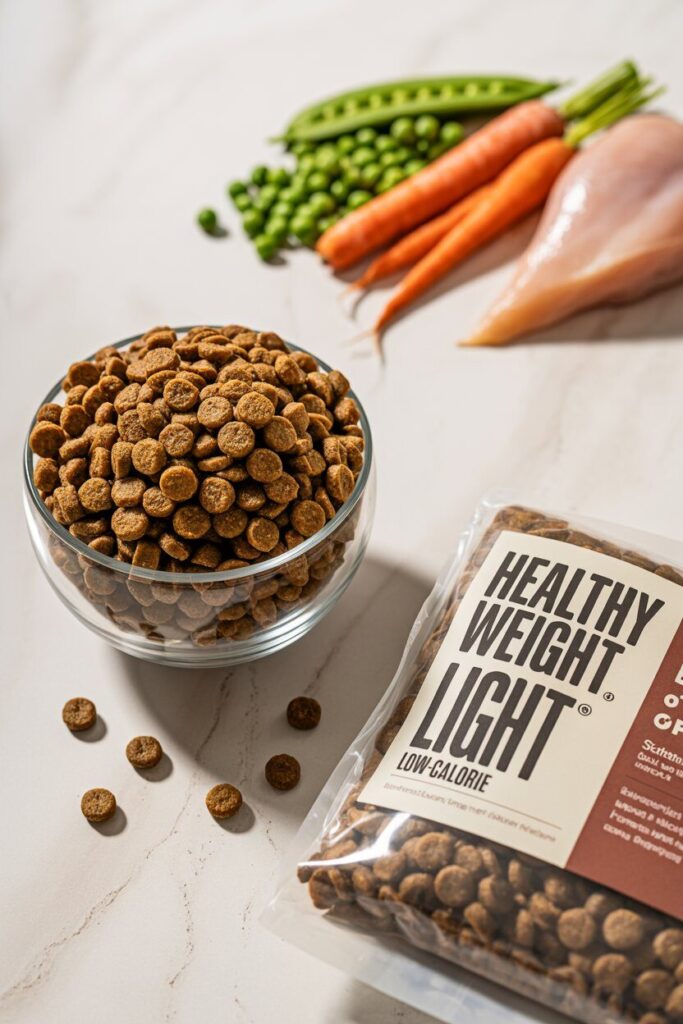
Let’s decode those confusing dog food labels together. When shopping for the best dog foods for weight management, pay attention to these factors:
- High Protein, Low Fat: Protein helps maintain muscle while burning fat. Look for lean sources like chicken, turkey, or fish.
- Fiber-Rich Ingredients: Fiber keeps your dog feeling full for longer, reducing begging between meals.
- Fewer Calories per Cup: This helps you control intake without making your dog feel deprived.
- L-Carnitine: This nutrient supports fat metabolism and energy production.
- No Artificial Fillers: Avoid foods that bulk up calories with corn or soy.
In short, think “quality over quantity.”
Top Picks: Best Dog Foods to Help Your Pup Lose Weight
Alright, now for the fun part. Let’s go through some of the best options that actually help dogs lose weight without sacrificing taste or nutrition.
1. Hill’s Science Diet Perfect Weight
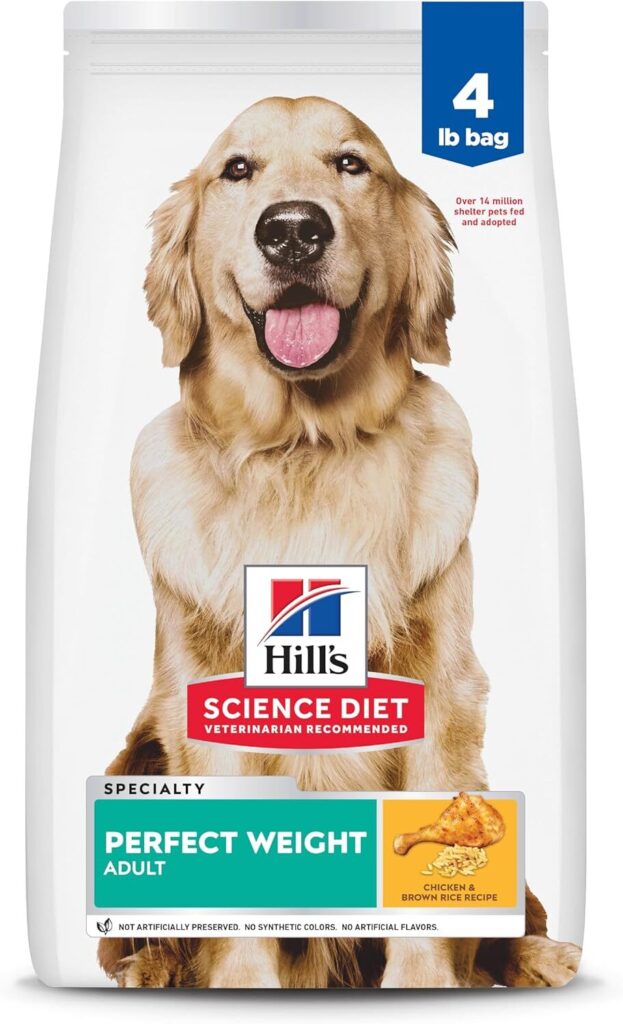
This one’s a classic for a reason. I tried it with Max, and let’s just say he started slimming down without even realizing it.
- Highlights: High-quality chicken protein, clinically proven weight loss formula.
- Why It Works: It keeps dogs satisfied with balanced nutrition while reducing calorie intake.
- Bonus: It’s suitable for both large and small breeds.
Max dropped a noticeable amount of weight in just two months, and his energy levels shot up.
2. Blue Buffalo Life Protection Healthy Weight
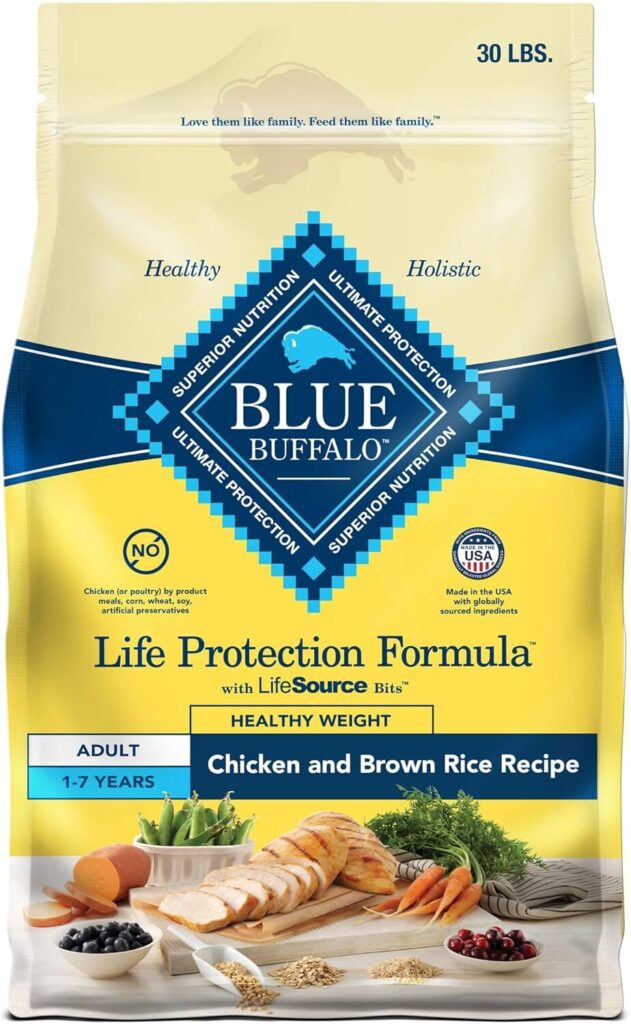
If your pup has sensitive digestion, this formula is a safe bet. It’s packed with antioxidants, vitamins, and whole grains.
- Highlights: Real chicken, brown rice, and veggies.
- Why It Works: The high-fiber blend controls hunger, and the natural ingredients support muscle tone.
- What I Love: It doesn’t have artificial flavors or preservatives, which makes it easy on your dog’s stomach.
3. Purina Pro Plan Weight Management
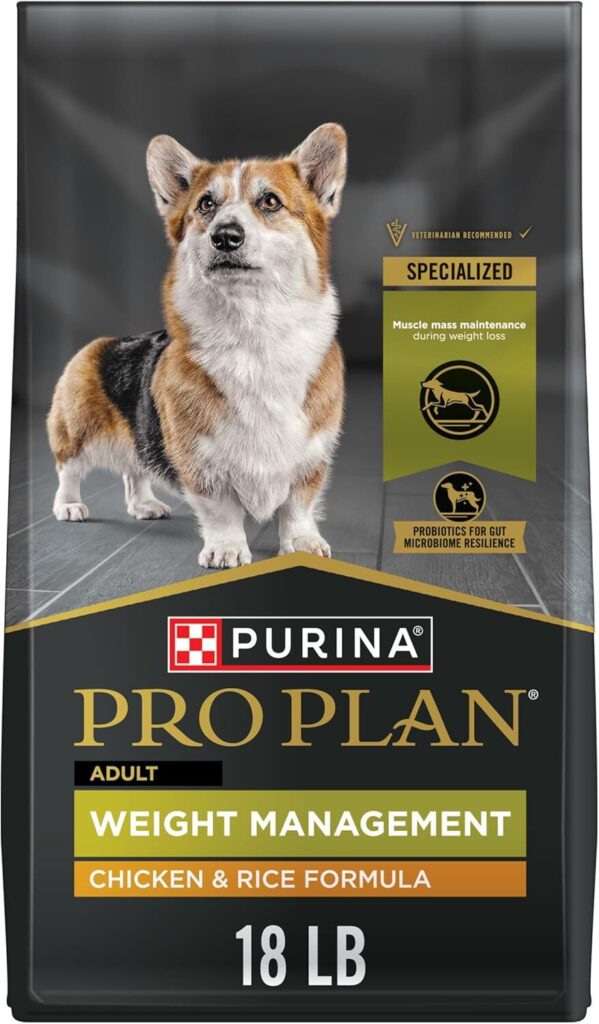
This one is perfect for picky eaters. You know the type—those dogs that sniff, judge, and walk away.
- Highlights: Shredded chicken mixed with tender kibble for texture.
- Why It Works: It combines taste appeal with controlled calories and boosted protein.
- Personal Tip: I used this for Max when he got tired of dry kibble, and it kept him engaged at mealtime.
4. Wellness CORE Reduced Fat Dog Food
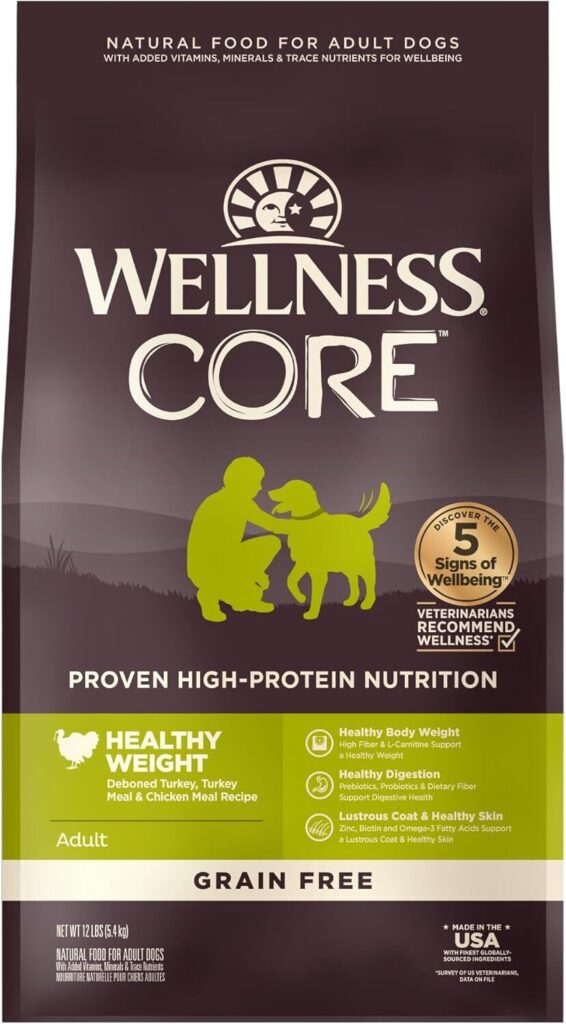
This grain-free formula focuses on protein and nutrient density. If your dog’s gut doesn’t agree with grains, this is your go-to.
- Highlights: Turkey and chicken meal base, no wheat or soy.
- Why It Works: It has a high protein-to-calorie ratio, keeping your dog lean and satisfied.
- Extra Perk: It’s rich in probiotics and omega fatty acids for healthy digestion and a shiny coat.
5. Nutro Ultra Weight Management
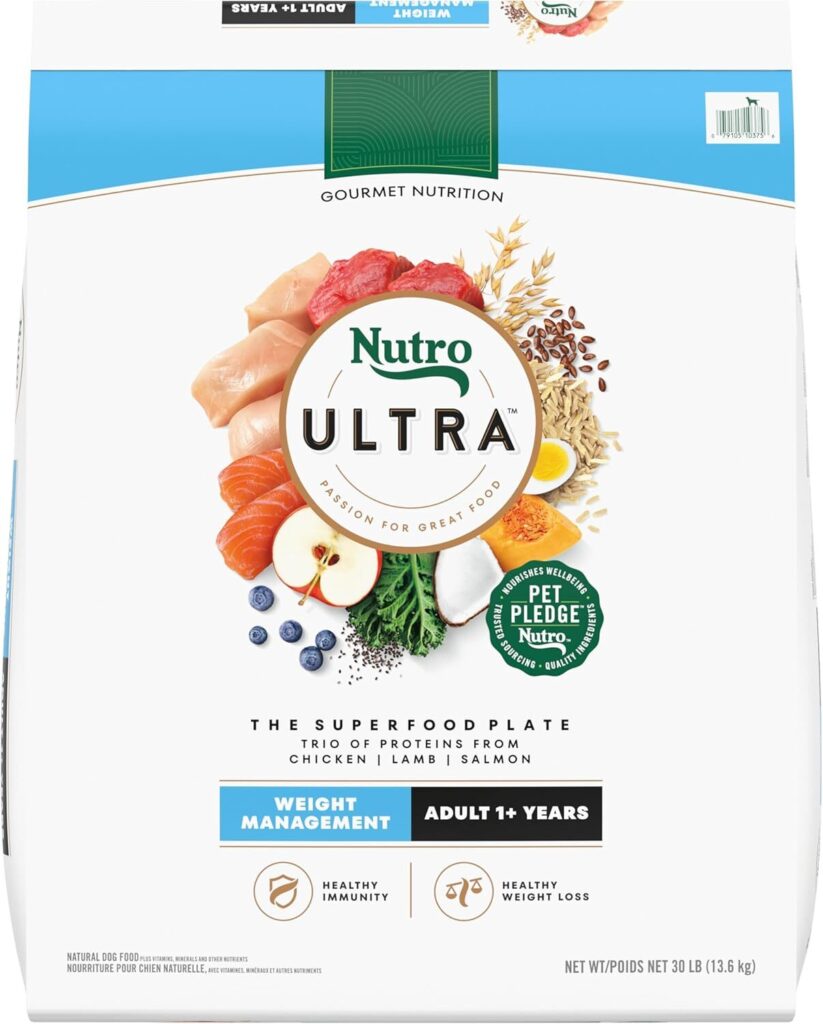
Want something that sounds fancy enough to make your dog feel like royalty? This one fits the bill.
- Highlights: Trio of protein sources—chicken, lamb, and salmon.
- Why It Works: It fuels muscle growth while cutting fat intake.
- Fun Fact: The mix of superfoods like chia and kale supports metabolism and overall wellness.
How to Transition Your Dog to Weight Loss Food
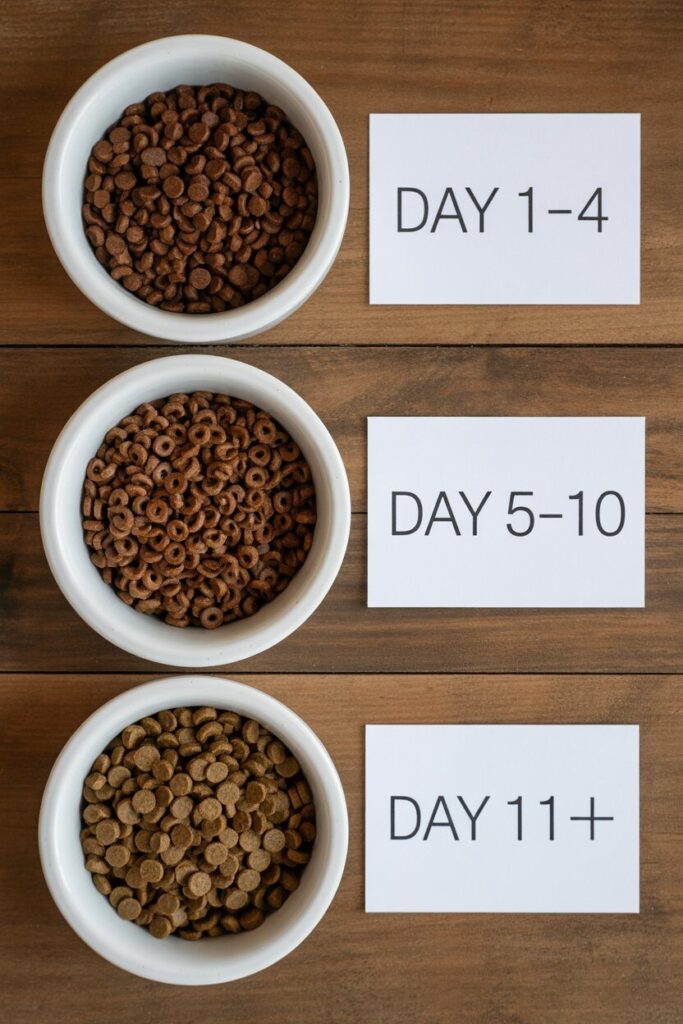
Here’s a rookie mistake I made: I switched Max’s food overnight. Bad idea. His stomach went on strike. Don’t repeat that. Dogs need gradual transitions to avoid tummy trouble.
Do this instead:
- Start by mixing 75% of the old food with 25% of the new food for 3–4 days.
- Then go 50/50 for another few days.
- Finish with 75% new food and 25% old before fully switching.
This slow transition gives their digestive system time to adjust. And trust me, your carpets will thank you.
Portion Control: The Secret Weapon
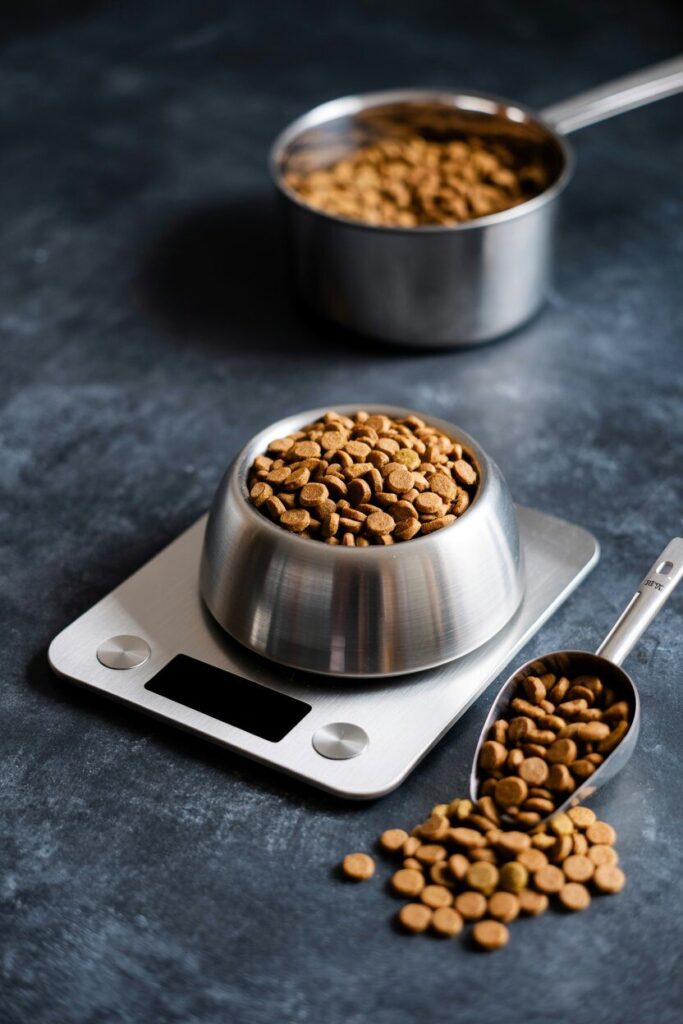
Even the best food won’t work if you’re overfeeding. Those “just one more scoop” moments add up fast. Always check the feeding guidelines on the bag, but remember—they’re general estimates.
You should:
- Measure portions accurately using a measuring cup.
- Feed at consistent times to regulate metabolism.
- Limit treats (or switch to low-calorie ones).
A good rule of thumb: Treats should make up no more than 10% of daily calories. If your dog’s treats look like mini sandwiches, it’s time for a rethink.
Exercise: The Other Half of the Equation
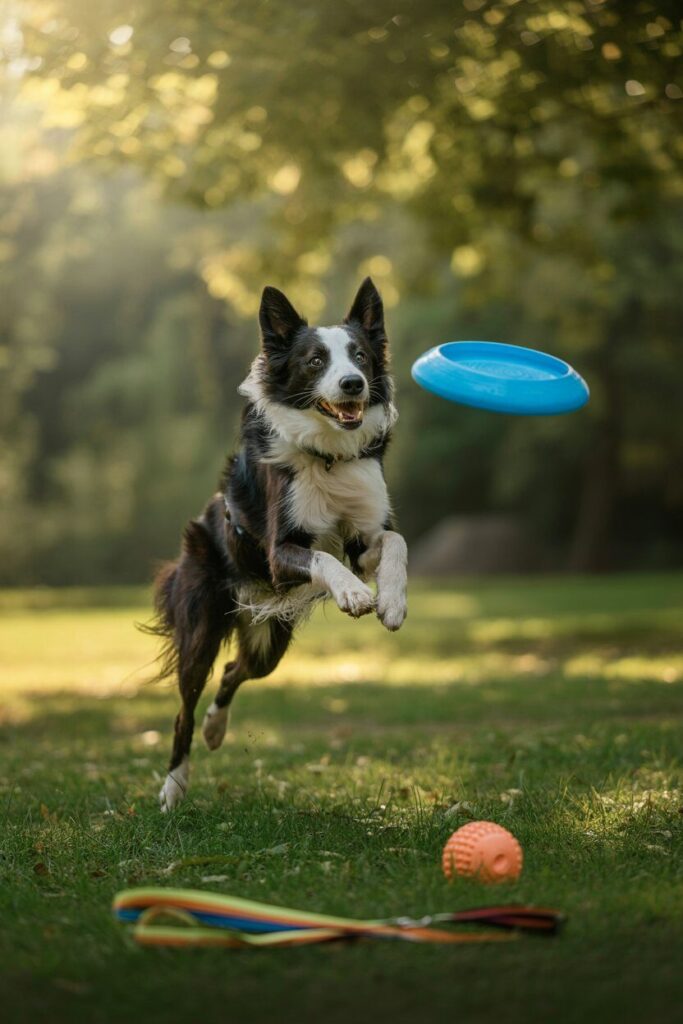
Food alone won’t do the trick. You wouldn’t lose weight by just “eating better” while sitting on the couch, right? The same goes for dogs.
Try these activities:
- Daily walks (add an extra 10 minutes).
- Fetch sessions that make your dog actually run, not stroll.
- Puzzle feeders that make them work for food.
It doesn’t have to be complicated. A little more playtime each day can make a big difference.
Common Mistakes When Feeding for Weight Loss
Let’s call these out, shall we?
- Guessing portions: “Eyeballing” scoops is not portion control.
- Too many treats: You might as well hand them a cheeseburger.
- Skipping vet checkups: Your vet can track progress and adjust the plan.
- Feeding table scraps: Don’t do it, no matter how cute the begging face is.
These slip-ups happen to the best of us. Awareness is half the battle.
Homemade Options: Yay or Nay?
I know, the internet is full of DIY dog meal recipes. But here’s the thing: unless you’re a canine nutritionist, it’s tricky to get the balance right.
Homemade food can work if it’s vet-approved and nutritionally balanced. Otherwise, it’s safer to choose commercial weight management foods that are tested for proper nutrient ratios.
If you’re still tempted, talk to your vet about recipes or supplements to ensure your dog gets the right amount of protein, fiber, and essential vitamins.
How Long Does It Take to See Results?
Patience, my friend. Weight loss doesn’t happen overnight, not even for dogs. Most vets recommend aiming for 1–2% body weight loss per week. That might sound slow, but it’s healthy and sustainable.
You’ll start noticing:
- Increased energy and alertness.
- Better coat condition.
- More enthusiasm for walks and playtime.
The best part? That happy sparkle in your dog’s eyes when they feel good again.
Keeping the Weight Off
Once your pup reaches their goal, the mission isn’t over. The next step is maintenance. Switch to a “healthy weight” maintenance formula, and keep up the portion discipline.
Remember, weight gain creeps back quietly. Keep weighing your dog monthly and adjust food portions as needed. And no, “holiday weight” isn’t a valid excuse for them either.
Final Thoughts
Helping your pup lose weight isn’t about restricting joy; it’s about extending their happiness and lifespan. The right food, proper portions, and regular exercise create a combo that works every time.
I’ve seen it firsthand with Max—he’s lighter, faster, and way happier. When I see him chasing his ball again without huffing and puffing, I know every bit of effort was worth it.
So if your furry buddy has packed on a few extra pounds, take the first step today. Pick one of the best dog foods for weight loss, follow the plan, and enjoy watching your pup transform back into their energetic, tail-wagging self.
Because let’s be honest—nothing beats seeing your best friend live their best, healthiest life.
How Can I Tell If My Dog Needs to Lose Weight?
You can easily check your dog’s weight by feeling their ribs. If you can’t feel them, your dog may have extra pounds.
Also, look for a visible waistline from above. If your dog’s shape is round instead of hourglass, consider a health check.
Excess weight can lead to behavior changes. Your dog might pant heavily after a short walk or choose to lie down instead of playing fetch.
These signs, along with difficulty feeling the ribs, suggest your pup may need a weight management dog food.
What Should I Look for in a Weight Loss Dog Food?
When shopping for the best dog food for weight loss, choose high-protein, low-fat options. Look for real meat as the first ingredient.
Protein helps keep muscle while losing fat. Lean meats like chicken or turkey are great choices.
Fiber is important too. It helps your dog feel full, which stops overeating and begging for more.
Avoid fillers like corn, soy, or artificial additives. They add calories without nutrition. Instead, pick foods rich in vitamins, minerals, and omega fatty acids.
These support coat health and digestion. Remember, it’s not just about eating less—it’s about eating smarter.
How Long Does It Take for a Dog to Lose Weight on a New Diet?
Weight loss for dogs isn’t instant—it’s a marathon, not a sprint. Most vets suggest 1–2% of body weight loss per week.
This slow pace may take months for visible changes, but it keeps your dog healthy while burning fat safely.
Consistency is key. Control portions, limit treats, and ensure daily exercise. If your pup shows more energy and stamina after a few weeks, that’s a great sign the plan is working.
Can I Give My Dog Treats While They’re on a Weight Loss Plan?
Absolutely—you don’t need to cut treats completely. The secret is moderation and picking low-calorie options.
Replace high-calorie biscuits with healthier choices like small carrot sticks, apple slices, or vet-approved low-fat treats. These will satisfy your dog’s cravings without hindering progress.
Also, follow the 10% rule: treats should be no more than ten percent of your dog’s daily calories.
If you’re using a weight management dog food, adjust portions slightly when adding treats to keep the calorie balance right.
What Happens If My Dog Doesn’t Like Weight Loss Food?
Dogs can be picky eaters, especially with diet changes. If your dog rejects new food, mix it with their old kibble gradually. Over one to two weeks, slowly increase the amount of new food.
You can also warm the food lightly or add a splash of low-sodium chicken broth for smell.
Some high-protein weight control foods, like Purina Pro Plan Weight Management or Hill’s Science Diet Perfect Weight, offer both dry and wet options. Switching between them can help appeal to your dog.
